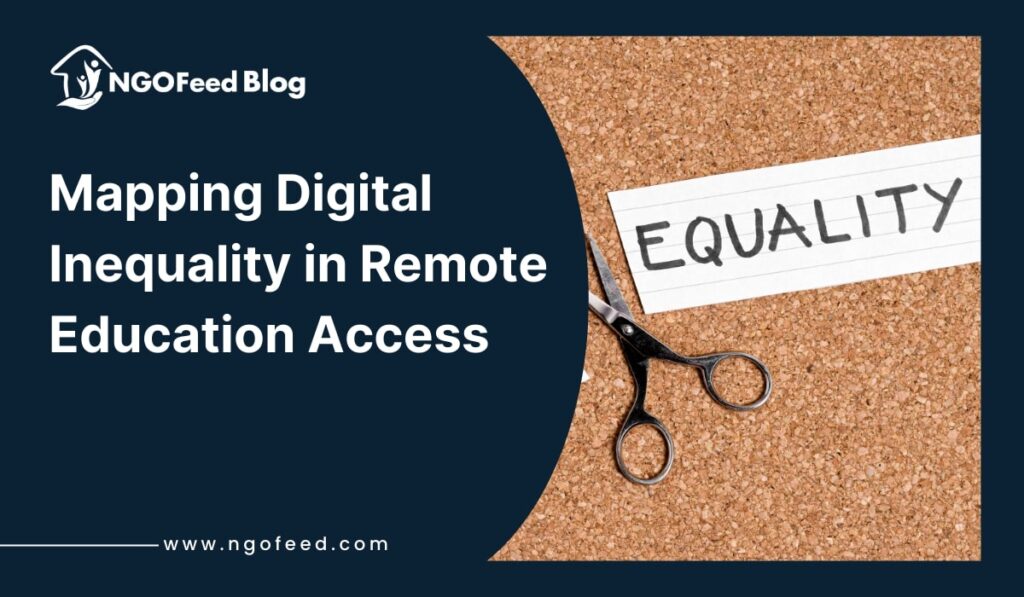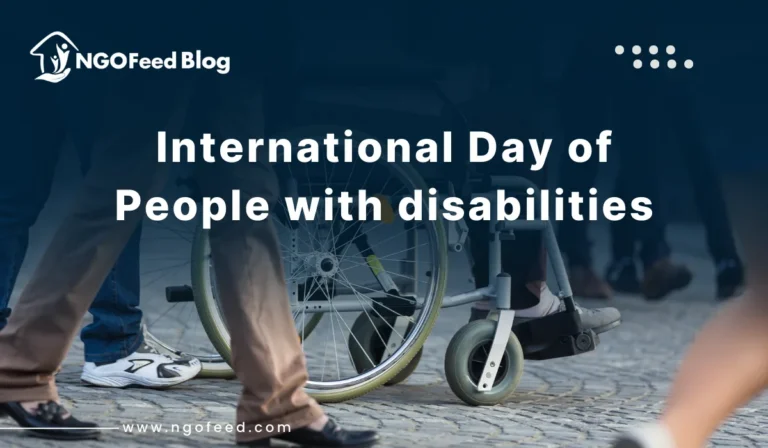Digital Inequality in Remote Education: The sudden transition to digital learning, which has been accelerated by the global upheavals caused by the COVID-19 pandemic, has pointed to a harsh truth: the absolute equality of access to remote learning is not always a reality among students. Whereas cities usually offer high-speed internet, modernised gadgets, and schools that are well-equipped, children in rural and distant locations are generally met with great obstacles. Digital inequality is not simply the access to a device or an internet connection anymore; it is the quality of access, the digital literacy of students and teachers, and the ability of households to make learning at home possible.
Remote education may enhance existing social and educational inequalities in areas with connection issues, poorly-resourced schools, and economically disadvantaged families. Students who do not have laptops, smartphones, or a reliable internet connection might not receive lessons, online tests, and interactive learning experiences, which can influence their academic performance and future opportunities. In addition, educators in rural locations do not usually receive sufficient training and resources to make use of digital resources, which also creates a gap in education.
Digital inequality can only be comprehended through mapping, to know the magnitude and details of this issue. Policymakers, NGOs in India, and educators can develop specific interventions by understanding the areas and communities with the highest levels of barriers to guarantee equal access. This also involves better infrastructure, affordable devices, improving digital literacy programs, and developing accessible digital platforms of learning. Digital inequality is more than a technological challenge; it is an important move to social justice, which would ideally see every child, no matter where they are located or where their socio-economic background places them, have a chance to be fully engaged in the digital age of learning.
Also Read: The Role of Greenpeace India in Environmental Research and Advocacy
Table of Contents
Understanding Digital Inequality in Remote Education
The definition of digital inequality in education is not limited to the presence of a device or an internet connection. It is the unequal access, utilisation, and benefits of online resources and tools that facilitate learning. Key dimensions include:
Access to Devices and connectivity- Students must have access to good internet and proper devices (laptops, tablets, smartphones) to be able to engage in remote education.
- Digital Literacy: The skills of students and teachers to operate online educational programs and online materials are essential to learning.
- Socio-Economic Factors: The household income, parental support, and availability of digital devices affect the capacity of students to participate in distance learning.
- Geographic Inequality: There are also infrastructure challenges in rural and remote regions, which include low bandwidth, insufficient network coverage, and limited school resources.
- Gender and Inclusion Inequality: Girls and children with disabilities face marginalised groups that are disproportionately impacted by digital barriers.
- Educational Support Systems: The presence of trained teachers, accommodating curriculum to online learning, and community support are the determinants of online education success.
Also Read: International Rescue Committee Research on Refugee and Migrant Support in India
These dimensions are important to understand in designing interventions to decrease the digital divide. The mapping of the regions that have the largest disparities in access, literacy, and resources allows NGOs, policymakers, and educators to take specific measures. Digital equity in education goes beyond technology, but is a move towards social inclusion, which will enable all students to learn, develop, and thrive in the digital era.
Current Challenges in Remote Education Access
Remote education can be used to eliminate learning gaps, although numerous students are experiencing some major challenges that restrict its use. Key challenges include:
- Shortages of Devices: Students in rural areas and low-income households do not have access to devices (laptops, tablets, etc.) to learn online.
- Poor Internet Connectivity: Unstable or slow internet in remote regions cannot allow one to attend live classes, download study materials, or even submit their assignment on time.
- Poor Digital Literacy: students and teachers can have a problem with the effective usage of digital platforms, educational software, and online assessment tools.
- Socio-Economic Constraints: Families who are in financial difficulties have to focus their basic needs instead of technology, and the students are left with no proper support to have an opportunity to learn remotely.
- Teacher Readiness: Teachers in low-resource schools can be untrained in online teaching, which minimises the quality and interactivity of the online lessons.
- Content Accessibility: Digital learning materials are not usually modified to local languages or for the disabled, which reduces inclusivity.
- Psychological and Social Barriers: The absence of communication with peers and teachers might influence motivation, engagement, and the general learning outcomes.
Also Read: CARE International Studies on Women Empowerment and Livelihood in Rural India
To overcome these challenges, it is important that governments, NGOs, and communities work together to ensure a better infrastructure, affordable devices, better digital literacy, and inclusive content. The analysis of these barriers is the key to establishing a more equal digital education system where all children have a chance to study successfully, no matter where they live or in what socioeconomic and social environment.
Role of NGOs in Remote Education and Government Initiatives
Digital inequality in education needs to be addressed in a multi-pronged approach. The NGOs and the government organisations are also instrumental in ensuring that remote learning is availed to all students, particularly those in underserved locations.
Infrastructure Development:
- The governments and NGOs work together in enhancing internet access, electricity, and distributing digital devices to schools and households in remote areas.
- Efforts such as community Wi-Fi hotspots and affordable distribution of tablets are meant to decrease the access disparities.
Digital Literacy Programs:
- Teacher and student training programs are used to develop skills on how to use online platforms.
- NGOs usually hold workshops and mentorship programs to increase the level of technological fluency within marginalised communities.
Inclusive Learning Content:
- NGOs and governments are engaging in creating learning materials in local languages and formats that can be accessed by students with disabilities.
- Offline content, interactive modules, and video lessons will ensure that one can still learn even where there is low connectivity.
Policy and Advocacy:
- The policies promoted by NGOs include the use of subsidies to acquire devices and cheap internet packages, which are highly digital-based or education-related.
- Governments also establish structures to incorporate technology in the mainstream education while checking equity in access.
Also Read: Research by ActionAid India on Women’s Rights and Social Inclusion
Success Stories and Case Studies:
- Digital learning hubs in villages or mobile education units, among other schemes, emphasise the role of focused interventions in bridging the gaps.
- The interaction of the civil society and the government has made initiatives scalable, sustainable and context-specific.
Through the combination of technological solutions, training and policy support, NGOs and governments build a pillar around equitable digital education. They strive not only to enhance access but to make sure that every student can effectively engage in remote learning in a significant way.
Pathways Toward Inclusive Digital Learning in Education
The development of fair access to digital education needs to be a holistic vision, which covers infrastructure, affordability, skills, and inclusion. Expanding infrastructure and connectivity is one of the main ways. Yes, this can be done through investments in high-speed internet, good electricity, and community learning centres or digital hubs that will make shared access to the devices and resources in isolated areas.
It is also important that the students are provided with the required tools. Low-cost devices and materials, affordable laptops, tablets, smartphones and offline digital materials enable students who live in underserved regions to engage in learning even in areas with intermittent connectivity.
Also Read: UNDP India Research on Poverty Reduction and Climate Change Adaptation
Another very important step is capacity building. Digital literacy among teachers and students is improved to make sure that the online platforms, learning management systems, and digital tools are utilised. Digital skills should also be introduced in schools to equip learners with the changing education environment.
Flexible learning models and inclusive content are important factors in eliminating gaps. Training content must be in the native languages and formats, as well as blended learning techniques, which are a combination of online and offline training, can be used to reach students in various settings.
Lastly, community participation and social policy assistance are required. Engaging parents, local communities, and community leaders will lead to the creation of a positive learning environment, and the policies of governments and the NGO programs that emphasise digital equity will guarantee scalability and sustainability of interventions.
Also Read: Role of NGOs in Education
With solutions to these spheres, the stakeholders will be able to make technology not a hindrance but a bridge before all students can be able to engage in the learning process in a meaningful way, irrespective of their geographical location, socio-economic background, and ability to learn.
Frequently Asked Question (FAQs)
1. What is the digital inequality in education?
Digital inequality is the unfair use and access to digital tools, access to the internet and access to online learning materials, which may result in restricted ability among students to take part in online learning.
2. Whom does digital inequality have the highest impact on?
Students of rural and remote locations, low-income families, girls, and children with disabilities are particularly impacted because of the lack of devices, low connectivity, and lack of educational support.
3. What are the ways NGOs and governments contribute to the mitigation of digital inequality?
Government efforts like NGOs make affordable devices and enhance internet connectivity, educate teachers and learners on how to use digital tools, and design learning resources that are inclusive to enable every student to participate in the process of remote education.
4. What are the primary issues with remote education access?
The major barriers are the absence of devices, poor internet connection, low digital literacy, socio-economic factors, insufficient teacher training, and unadapted learning materials based on the needs of local languages and accessibility.
5. What will it take to make digital learning more inclusive?
To achieve inclusive digital learning, infrastructure, cheap devices, digital literacy classes, available content, blended learning strategies, community, and policies should be combined, which focus on ensuring equal access to every student.










